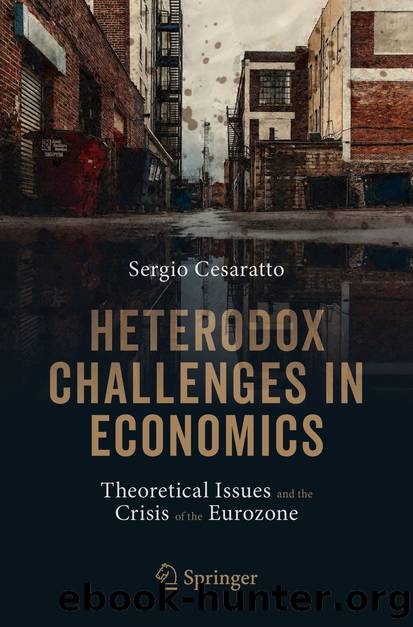Heterodox Challenges in Economics by Sergio Cesaratto

Author:Sergio Cesaratto
Language: eng
Format: epub
ISBN: 9783030544485
Publisher: Springer International Publishing
5.4 Let Us Open Our Minds and Draw a Balance
When I was in kindergarten, some relatives from Paris came to visit us in Rome. I proudly showed them the single Roman underground train line and had them listen to Adriano Celentano (an Italian pop singer) singing on the radio (we did not have a television set). It was a shock to learn that the Paris metro had many lines and had been built years before, and that in France they had never heard of Celentano. My little world was shattered. In those days, parents did not take you on low-cost flights to see the great cities of Europe. It was a small pain. Opening the mind is sometimes painful and can be expensive if you do it with the help of a shrink.
To put the cards on the table for those, often influenced by Modern Money Theory, who think monetary sovereignty is the cure for all ills, let me say that not all national currencies are on the same plane. There are currencies which by virtue of the economic and political strength and financial reliability of the issuing country (that for example does not have a history of financial failures) are commonly accepted in international payments. Principally the American dollar, since the euro has not yet achieved a full status of international currency (which is not surprising, considering its problems). Countries that issue currencies accepted in international payments are in a special position because they âprintâ the money with which they can make their own paymentsâit is as if we could print money to go shopping or play poker! Other countries, such as Italy when it had the lira, have to obtain international currency in order to finance imports. Italy could perhaps pay in lira if it guaranteed its convertibility to international currency. This convertibility depends on having abundant currency reserves (international currencies are in fact also called reserve currencies). For the dollar it is different. Until 1971, the United States in theory guaranteed convertibility of the dollar to gold, making the dollar as good as gold. Since 1971, one dollar is as good as a dollar. The guarantee is American economic and military power.
Prof, but now with the euro is it not easier for us than in the days of the lira? We are almost Americans. Indeed, behave like Americans is what Europe ought to do, but unfortunately does not. Much more about this later. For the moment let us return to the case of the Italian lira, the case of a country that has to procure international currency, presumably dollars, in order to buy goods abroad.
A first channel for procuring international liquidity is through exports. If others ask us to pay in dollars, we can do the same. Liquidity is then lost in the first place, paying for imports. The difference between exports and imports is the trade balance.
Download
This site does not store any files on its server. We only index and link to content provided by other sites. Please contact the content providers to delete copyright contents if any and email us, we'll remove relevant links or contents immediately.
International Integration of the Brazilian Economy by Elias C. Grivoyannis(75125)
The Radium Girls by Kate Moore(11621)
Turbulence by E. J. Noyes(7702)
Nudge - Improving Decisions about Health, Wealth, and Happiness by Thaler Sunstein(7247)
The Black Swan by Nassim Nicholas Taleb(6771)
Rich Dad Poor Dad by Robert T. Kiyosaki(6182)
Pioneering Portfolio Management by David F. Swensen(6082)
Man-made Catastrophes and Risk Information Concealment by Dmitry Chernov & Didier Sornette(5652)
Zero to One by Peter Thiel(5494)
Secrecy World by Jake Bernstein(4389)
Millionaire: The Philanderer, Gambler, and Duelist Who Invented Modern Finance by Janet Gleeson(4101)
The Age of Surveillance Capitalism by Shoshana Zuboff(3990)
Skin in the Game by Nassim Nicholas Taleb(3971)
The Money Culture by Michael Lewis(3849)
Bullshit Jobs by David Graeber(3836)
Skin in the Game: Hidden Asymmetries in Daily Life by Nassim Nicholas Taleb(3726)
The Dhandho Investor by Mohnish Pabrai(3561)
The Wisdom of Finance by Mihir Desai(3526)
Blockchain Basics by Daniel Drescher(3331)
